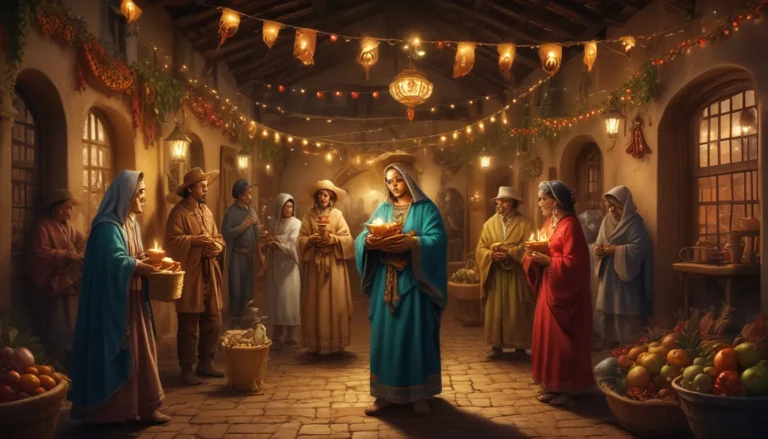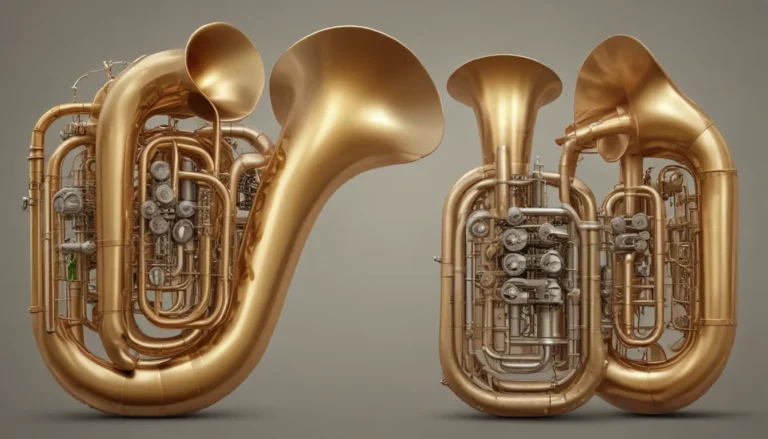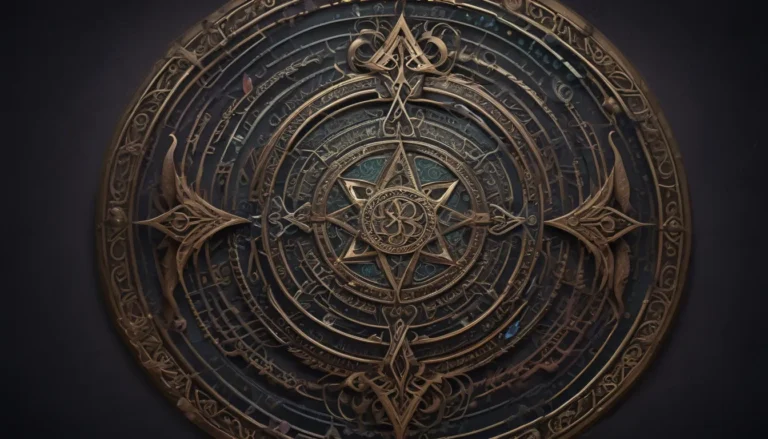The images in our articles may not match the content exactly. They are used to grab your attention, not to show the exact details in the text. The images complement the text but do not replace it.
From the awe-inspiring heights of the Andes Mountains emerged a civilization that would shape the course of history – the Incas. Their legacy of innovation, spirituality, and resilience continues to resonate with us today. In this article, we embark on a journey to explore the captivating world of the Inca civilization. Join us as we uncover 20 fascinating facts that illuminate the achievements, beliefs, and daily life of this remarkable ancient culture.
The Magnificent Inca Empire
At the zenith of their power, the Inca Empire, known as Tawantinsuyu, stood as the largest pre-Columbian empire in the Americas. Spanning a vast expanse of approximately 2,500 miles along the western coast of South America, the empire encompassed territories that are part of present-day Peru, Ecuador, Bolivia, and Chile.
Tracing the Origins of the Incas
The story of the Inca civilization unfolds in the 13th century AD in the Cusco region of modern-day Peru. It was here that the Incas established their capital city, Cusco, a hub of political, administrative, and cultural activities that would shape the destiny of their empire.
The Marvel of the Inca Road
A testament to their engineering prowess, the Incas constructed the Inca Road, or Qhapaq Ñan, an extensive network of roads that stretched an astonishing 24,000 miles. This remarkable infrastructure interconnected the sprawling empire, facilitating communication, trade, and military endeavors.
Reverence for Inti, the Sun God
Central to Inca spirituality was the worship of Inti, the Sun God, revered as their primary deity. The emperor, known as the Sapa Inca, was believed to be the direct offspring of the sun. Annually, the Inti Raymi, or Festival of the Sun, served as a grand homage to Inti, celebrating the light and life it bestowed upon the empire.
Enigmatic Machu Picchu
Amidst the rugged Andean landscape, Machu Picchu emerges as an enigmatic Inca citadel, cloaked in mystique and allure. Constructed in the 15th century, this iconic site served as a royal retreat for the Inca emperor, shrouded in serenity and splendor.
Decoding the Quipu Information System
The Incas devised an intricate information system known as quipu, comprised of colored strings and knots. While the exact functions of quipus remain shrouded in mystery, scholars postulate that these enigmatic devices were utilized for numerical calculations and administrative record-keeping.
- Quipu Usage:
- Numerical calculations
- Administrative record-keeping
Ingenious Terraced Agriculture
Faced with the challenge of cultivating crops in the rugged Andean terrain, the Incas ingeniously employed terraced agriculture. By constructing stepped platforms on hillsides, they succeeded in cultivating an array of crops including maize, potatoes, and quinoa, sustaining their burgeoning population.
Image from Adobe Stock
Masterful Masonry Techniques
The Incas’ mastery of masonry is epitomized by their intricate structures crafted from colossal stone blocks that interlock seamlessly without mortar. Immortalized in the monumental walls of Sacsayhuamán, their architectural prowess stands as a testament to their craftsmanship and precision.
Innovators of Suspension Bridges
Pioneers in bridge construction, the Incas engineered robust suspension bridges, such as the Q’eswachaka, utilizing woven grass and fibers. These resilient structures facilitated safe passage across treacherous canyons and rivers, showcasing their ingenuity and practical acumen.
The Sacred Coricancha
Nestled in the heart of Cusco, the Coricancha, or Temple of the Sun, stood as a pinnacle of Inca spirituality. Adorned with gold, silver, and precious stones, this sacred site embodied the Incas’ advanced metallurgical skills and reverence for the celestial divinity of Inti.
The Revered Sapa Inca
The Sapa Inca, sovereign ruler of the Inca Empire, held sway over the realms of power and divine authority. Revered as a direct descendant of the Sun God, the emperor wielded unparalleled influence and commanded the reverence of his subjects.
The Legacy of Inca Mummies
Central to Inca funerary practices was the tradition of mummification, where the bodies of deceased rulers and nobles were preserved. Believing in their continued presence and influence in the afterlife, the Incas venerated their departed leaders with reverence and honor.
Image from Adobe Stock
Innovations in Agriculture
Fostering agricultural prosperity, the Incas implemented groundbreaking techniques including terracing, irrigation systems, and the creation of artificial islands known as “floating gardens.” These innovations bolstered crop yields, ensuring sustenance for their burgeoning populace.
Traversing the Inca Trail
The storied Inca Trail traces the ancient footsteps of the Incas from the Sacred Valley to the majestic Machu Picchu. Offering panoramic vistas of rugged mountains, verdant cloud forests, and archaeological marvels, this renowned trek provides a glimpse into the rich tapestry of Inca civilization.
The Artistry of Inca Textiles
Renowned for their weaving prowess, the Incas crafted intricate textiles from luxurious fibers such as alpaca and vicuña wool. These exquisite fabrics adorned clothing, served in ceremonial rites, and were offered as tributes to the divine entities that governed Inca society.
Celestial Insights of Inca Astronomy
The Incas possessed a profound understanding of celestial phenomena, constructing observatories to chart the movements of the heavens. Their adept knowledge of astronomy guided agricultural cycles and spiritual practices, underscoring the inseparable link between the cosmos and earthly existence.
Strategists of Warfare
The Inca military, under the aegis of the Sapa Inca’s army, showcased strategic acumen and disciplined organization. Armed with sophisticated weaponry, adept soldiers, and a network of messengers known as chasquis, the Inca military machine upheld a formidable presence in the Andean heartlands.
The Legendary Chasquis
Encompassing a unique relay system, the chasquis served as adept messengers tasked with traversing vast distances to relay crucial communications. Their swift and efficient network facilitated seamless contact across the expanse of the Inca Empire, symbolizing the ingenuity of Inca logistics.
Oral Tradition as Cultural Heritage
Devoid of a written script, the Incas preserved their cultural legacy through oral traditions passed down by skilled storytellers known as amautas. These custodians of knowledge safeguarded the histories, myths, and wisdom of the Inca civilization, ensuring continuity across generations.
The Spanish Conquest and Inca Civilization’s Demise
Tragically, the flourishing Inca Empire met its demise with the arrival of Spanish conquistadors led by Francisco Pizarro. The capture of the last Inca emperor, Atahualpa, in 1533 heralded the swift collapse of the Inca civilization, marking the end of an era rich in innovation and cultural heritage.
Image from Adobe Stock
Reflecting on the Inca Legacy
In these captivating revelations, we are privy to the resplendent tapestry of the Inca civilization – a tapestry woven with threads of ingenuity, spirituality, and architectural splendor. As we delve into their extraordinary achievements and enduring legacy, we pay homage to the indomitable spirit of a civilization that once thrived amidst the lofty peaks of the Andes Mountains.
Unveiling the Inca Civilization: FAQ
Did the Incas possess a written language?
The Incas did not develop a written script; instead, they relied on oral traditions to transmit their knowledge and history to succeeding generations.
What was the purpose of quipus in Inca society?
Quipus served as a sophisticated recording system utilized for numerical calculations and administrative record-keeping, hinting at the complexity of Inca civilization.
How did the Incas achieve their remarkable architectural feats without mortar?
Through meticulous craftsmanship and innovative construction techniques, the Incas seamlessly interlocked massive stone blocks in their structures, exemplifying their unparalleled mastery of masonry.
What precipitated the downfall of the Inca Empire?
The incursion of Spanish conquistadors led by Francisco Pizarro culminated in the capture of the last Inca emperor, Atahualpa, in 1533, marking the swift decline of the once-mighty Inca Empire.
Where can enthusiasts experience the allure of the Inca Trail?
Travelers seeking to immerse themselves in the legacy of the Incas can embark on the renowned Inca Trail, embarking on a transformative journey from the Sacred Valley to the iconic Machu Picchu.
Elevating Trust in our Content
Each revelation shared within this narrative stems from the collective contributions of real users like you, enriching our platform with diverse insights and knowledge. Our unwavering commitment to authenticity and accuracy is upheld through meticulous editorial review, ensuring that the facts we present resonate with credibility and intrigue. Delve into a realm of boundless discovery and enlightenment as you explore the profound depths of history and heritage with us.
By: Virtual Assistant.Transforming the original article into a comprehensive exploration of the Inca civilization, we have unraveled the enigmatic tapestry of this ancient culture, shedding light on its extraordinary achievements and enduring legacy. Join us on a captivating journey through the realms of innovation, spirituality, and cultural grandeur as we pay tribute to the remarkable civilization that once flourished amidst the majestic peaks of the Andes Mountains.






